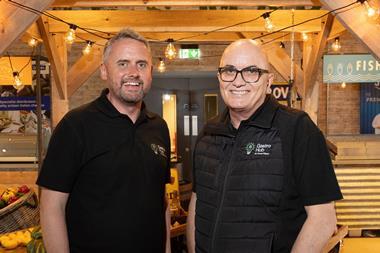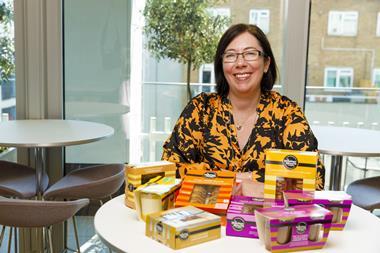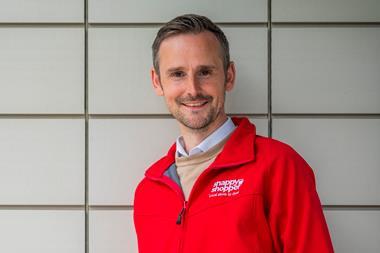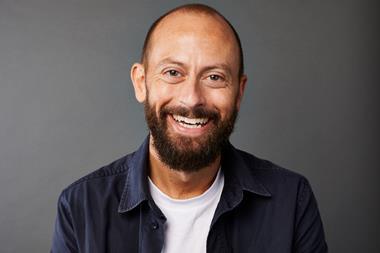If online success was as simple as getting Google sussed, mySupermarket boss Allon Bloch would be laughing all the way to the bank. Google the words milk, honey or toilet paper alongside the names Tesco, Sainsbury’s or Asda and you’ll see why - mySupermarket usually tops the search results. The grocers are being out-Googled.
But if mySupermarket is ever going to become the ‘eBay of grocery’ and slash 20% off the average weekly shop - as site director Johnny Stern claimed it eventually would when it launched in October 2006 - it will be down to a lot more than SEO. So how is mySupermarket going about living up to these grand ambitions?
Well, it seems to be getting there. “If Johnny said we were going to save users 20% of their grocery bills, that’s fairly prescient - the average saving on mySupermarket is very close to 20% ,” says Bloch. As for being the ‘eBay of grocery’, the site has a long way to go - it now has about three million monthly users eBay has hundreds of millions.
snapshot
Name: Allon Bloch
Age: 42
Lives: New York, married with three children
Born: Israel
Career: 2010-present: CEO mySupermarket.com
2008-2010: Co-CEO and president, Wix.com
2000-2008: General partner at venture capital firm JVP
1997-2000: Consultant, McKinsey & Co
1997: MBA from Columbia
Hobbies: Squash, hiking
But Bloch isn’t too bothered. The website - which allows customers to compare the prices of all of Britain’s online grocers and shop from them through one site - is “up with the big four online” when it comes to traffic, says Bloch. But he’s tight-lipped on what that means in terms of revenue, derived from both advertising and selling the rich data the site has amassed on shopper behaviour. All he’ll say is that it’s closer to £10m than £50m, that it’s doubled in the past year and that he wants to boost it further by increasing the rate of transactions on the site.
Currently, less than 10% of visits end in a transaction, but by hammering home the savings shoppers can make and ensuring there is a steady stream of innovation, he is hopeful the ratio will increase. Many innovations are already making online shopping much easier, says Bloch: “Try and browse through Tesco or Sainsbury’s online. They’re multibillion-dollar businesses yet shopping on their websites feels like a chore. The way we present products is vastly superior.”
Things are being improved further. Shoppers have always been given a running total of what their basket will cost in each of the retailers as they browse the site, but now they can split their basket between two retailers to maximise savings. “We’ll tell you when to split,” says Bloch. “There’s no judgement, it’s just: ‘here’s the trade-off - you can save £10 by splitting your cart’”.
He has more tricks up his sleeve: “There’s a tendency to say ‘oh they’re just a price comparison website’ - we’re much more than that. We can shop for you 24/7, based on your shopping list, so you can spend only one minute shopping. We’re going to add health searches at the end of the year or the beginning of next. Good luck if you try to compare what’s in a cereal on the back of a pack. It’s completely confusing. We can throw it into our algorithms and automatically show healthier options.”
“When you work online you’ve opened the kimono - you’re out there for all to see”
The key to the site’s model is turning raw data into digestible information - and not just for shoppers. Developments like Swap & Save, which gives shoppers the option to swap selected products with cheaper alternatives, gives greater insight into the decisions shoppers make. “Twenty years ago, P&G and Unilever knew more about consumers than anyone,” says Bloch. “That’s all changed. Our model has created this really interesting data that just doesn’t exist elsewhere.”
Brand Stores - microsites featuring prominently on the website that allow suppliers to group products and shoppers to subscribe to promotions - give brands the chance to tap into this data. Since its February launch brands such as Birds Eye and Kellogg’s have bought into the concept, with nine now running. Bloch says that number will double before the end of the year. He adds that Brand Stores will account for the lion’s share of the website’s revenues within the next two years.
There’s plenty more to keep Bloch occupied. Following a $10m investment from global communications giant WPP Digital in April, mySupermarket is gearing up to go global. The site, currently only available here in the UK, Japan and Israel, will get its US launch in the new year and Bloch is also looking at developing markets. M-commerce is another priority.
A barcode-scanning iPhone app, launched in March, can help make a supermarket’s in-store offerings more transparent. But for full transparency, Bloch needs to convince offline retailers to share pricing data. “It’s easier for Morrisons, Aldi and Lidl to make value claims offline because nobody can check it easily,” he says. “We’ve approached some of them for their pricing information and a lot of consumers have asked too. I’m publicly asking now. Working in isolation when there’s this grand thing called the internet just doesn’t make sense. When you work online you’ve opened the kimono - you’re out there for all to see.”
So, over to you Morrisons, Aldi and Lidl. Will you open your kimonos now?















No comments yet